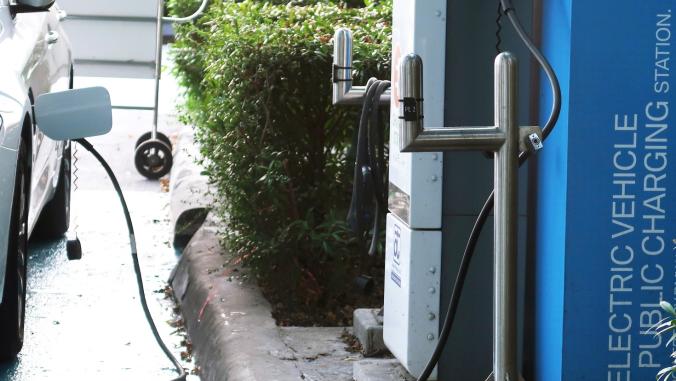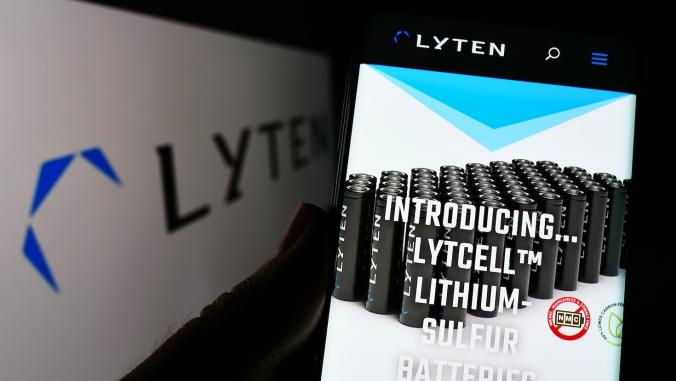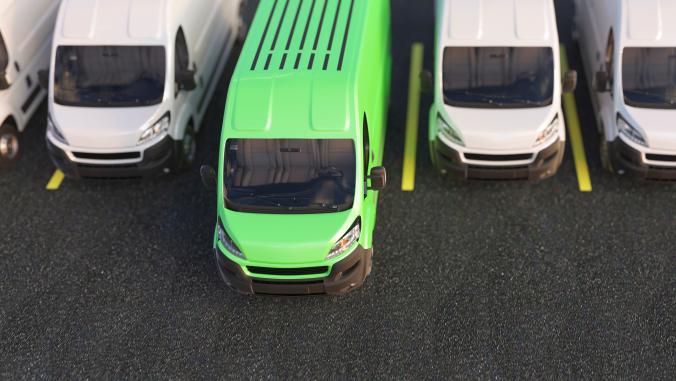As sales of electric vehicles boom in certain regions of the world, the companies that provide the necessary battery materials are getting ready for the ride. But, naturally, it will have to be a sustainable journey.
American chemical giant Albemarle, one of the world's largest producers of lithium for EVs, recently signed on to the United Nations Global Compact and announced emissions-reduction goals for 2030 and 2050. By 2030, Albemarle plans to reduce overall greenhouse gas emissions in parts of its chemicals business, and meanwhile grow its lithium capacity in a greenhouse gas intensity-neutral manner. By 2050, the company plans to be net-zero carbon emissions.
It'll be a huge challenge for a company that operates mines and manufacturing plants around the world that use a whole lot of energy, water and raw materials. But the Charlotte, North Carolina-based firm sees more sustainable operations as a necessary part of its business, particularly when it comes to working with customers that are selling into the EV battery supply chain.
GreenBiz sat down with Albemarle CEO Kent Masters to discuss the company's recent sustainability report, its high-reaching net-zero carbon goal and how the company plans to get there. This interview has been lightly edited for clarity and brevity.
Katie Fehrenbacher: The company just signed on to the United Nations Global Compact. Why does Albemarle want to go in that direction?
Kent Masters: A lot of our stakeholders are very interested from a sustainability standpoint. Our investor base is very interested. Internally our employees are interested in it. But also our customers. So really across all of our businesses. But it’s really important for our lithium business with respect to electric vehicles.
So our customers, the OEMs and anyone making electric vehicles are very keen to understand the sustainability profile of their supplier. And we use sustainability as part of our value proposition to our customers.
Fehrenbacher: The sustainability report is broken down between the three markets: lithium, catalysts and bromine. Catalysts and bromine had overall reduction targets, and then lithium was based on a target around carbon intensity over time. Can you talk a little bit about the reasons for setting these different targets, across the different business lines?
Masters: For the lithium business, we're growing at, call it, a 20 percent compound growth rate basis. So there's just no way we can have an absolute reduction in those emissions by growing 20 percent a year. In five years, we're going to be more than double. So we did that on an intensity basis. To reduce the intensity of emissions per ton or kilogram of lithium, it's kind of the only way we could get to some meaningful targets.
We see a role for us in the reprocessing of lithium coming out of that recycling circle, down the road, when that starts happening.
Then given the fact that we're enabling a greener economy, the use of our products reduces emissions in the electric vehicle market, we've been kind of playing off that. So we feel like it's better that we grow that business and then reduce the intensity as much as possible.
Fehrenbacher: From a financial perspective, is there an economic benefit to reducing the carbon intensity for the lithium business?
Masters: Yeah, there will be projects that we can invest in that will have positive financial returns and have a side benefit of less emissions. And those are the easier ones. Those are the ones we've either been doing or we got on our list to be doing.
It's not an easy question to answer because I think our customers are going to require us to do this. So for us to stay in business and to serve those customers, or maybe in the case of lithium to grow with those customers, we're going to have to make these investments. So it kind of gets built into the business case.
Fehrenbacher: When you're talking about working with customers, and sustainability being attractive, what are your customers asking for? What does that mean to them?
Masters: It depends on the customer base. The one where we get all the press is the electric vehicle market. The OEMs in that space that are either making electric vehicles or launching electric vehicles are all interested in sustainability. That's a key part of their offering to their customer — a cleaner environment and a cleaner world — and they want to make sure that their supply chain subscribes to that as well. Everything that goes into that is done either on a carbon-neutral or carbon-reduction basis, so that they are playing their part, not just in selling the cars, but making sure their supply chain is as sustainable as possible.
Fehrenbacher: What's Albemarle's role in circular batteries and making batteries recyclable? Not being a battery maker, but being a supplier in the supply chain, how can the company play a role?
Masters: We see a role for us in the reprocessing of lithium coming out of that recycling circle, down the road, when that starts happening. We're not looking to be the people to take control of the batteries and break them up and get the components out. But they'll be a piece coming out of that recycling process that's going to be a lithium-containing material. And the processes to clean that up are not a lot different (from) what we use and making virgin material today from the resources that we have.
So we think that there's a role for us in working with a couple of different potential partners and trying to work out what that business model might look like. But really, it would be in reprocessing lithium back to its original state. And the reason we think it's a fit for us is that the chemistry to reprocess it is very similar to the process chemistry we use today to get from raw material to a finished product.
Fehrenbacher: What's the role of technology in trying to make the company more sustainable? How is Albemarle looking to connect with startups and new tech companies that can help make the company more sustainable?
Masters: We spend a lot of effort and time on our own technology focused around the lithium chemistry, and the chemistry that goes into making batteries. And maybe some of the process chemistry about recycling it. We focus there.
But we also spend a lot of time making sure we understand what technologies are out there, or what startups are coming. We've invested in some small companies that have interesting technology that we think fits into our strategy. We spent a lot of time monitoring that and staying connected in the industry.
If there's a technology that we think influences our key value chains, we'll either partner with them or invest in them, or at least stay knowledgeable. So we have access to that technology.
Fehrenbacher: The Biden administration is really eager to expand domestic production of minerals for batteries. Do you see these efforts as particularly exciting?
Masters: It's a little bit of a wait and see what happens. We produce lithium in Nevada. We have a mine here in North Carolina, and we can potentially reopen that. Support from the government would help us do that. It's a good resource, the quality of it is good. The questions are about what's it going to take around permitting to operate a mine in the U.S. Those are some things that we would like to engage with the administration around to see if that's possible for us to do that.
We have resources around the world and ultimately they will move battery production to the U.S., and we'll be selling into that. We have strategies to localize the supply to the extent possible. That will most likely be a combination of some local minerals, and some from outside the U.S. And then in time, you would layer in a recycling stream as part of that. So it's probably going to be partially recycled, partially local and part of it from outside the U.S. to satisfy the demand.
Fehrenbacher: Albemarle has three main sustainability goals for 2021: to support the goals of the Paris Agreement and get to net-zero operations; to grow the lithium capacity in a greenhouse gas intensity neutral manner; and then to reduce the greenhouse gas emissions in bromine and catalysts. When you look at those three overarching goals, what do you see as being the most challenging area?
Masters: Well, they're all a challenge. For catalyst and bromine, we're going to reduce the overall emissions that we have off of businesses that are growing less than 10 percent. And that's a big challenge to hold on an intensity basis.
The business growing 20 percent is probably the biggest challenge that we have. We have projects on the books that will make a dent in that. But we do not have a full list of projects that get us to those goals by 2030.
To get to the 2050 target, we'll have to do some things that, frankly, we're not even exactly sure what that would be right now.
We'll have to develop those projects as we go. Some of them may require some new technology that's probably not commercial. But it's all been at least envisioned today.
To get to the 2050 target, we'll have to do some things that, frankly, we're not even exactly sure what that would be right now. But in time, we think that that technology will become available and allow us to meet those targets.
Fehrenbacher: These are technologies that can make the process more efficient? Or these are clean energy-powered technologies?
Masters: Yeah, both of those. Some chemistry, some process development that would make us more efficient in making lithium. But also in clean energy.
To get to our targets, we'll have to have a much stronger mix of clean energy than we do today. And those will be development projects, but also potentially just new projects.
Green hydrogen is an example. That might be a way for us to reduce our footprint significantly if we had access to that in the locations where we operate. Carbon capture would be another way to do it, either participate as part of a big project or, or potentially even capture carbon from our facility.
Fehrenbacher: In terms of powering operations and mining with clean energy, Is there a way to power a significant amount of operations? And how does that work?
Masters: There are two pieces to that. Using solar power to help process the brine. So for example, in the Salar de Atacama [in Chile] most of the power that we use in concentrating the brines is solar power, through evaporation. That's why that solar footprint is much more sustainable than some of the other hardrock processing where you don't have the benefit of that solar power. So that's one piece.
The other would just be solar power that we could access to power our facilities. So whether that is solar or wind or from green hydrogen we would either have to do a cogeneration type of facility, our own solar park as an example. We could envision that in Australia.





